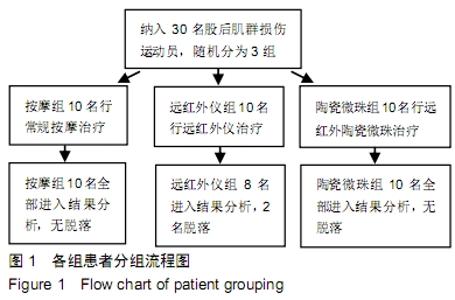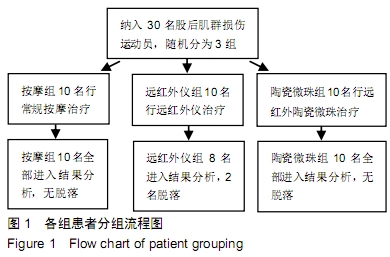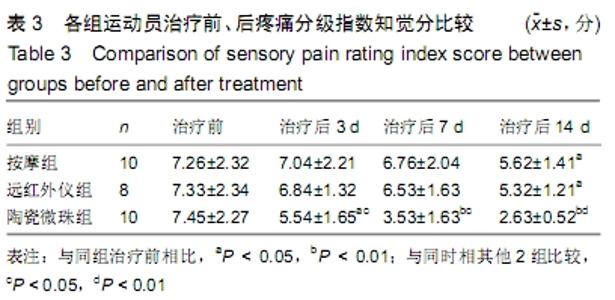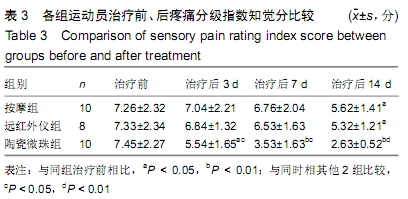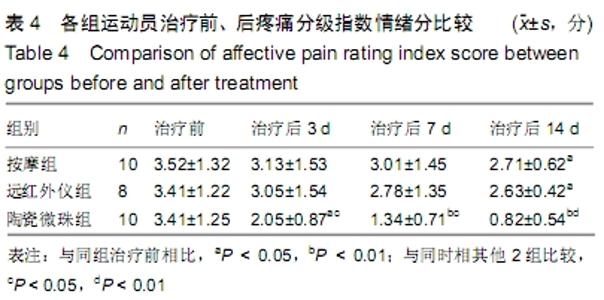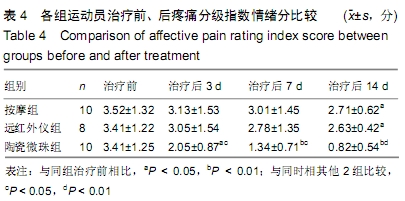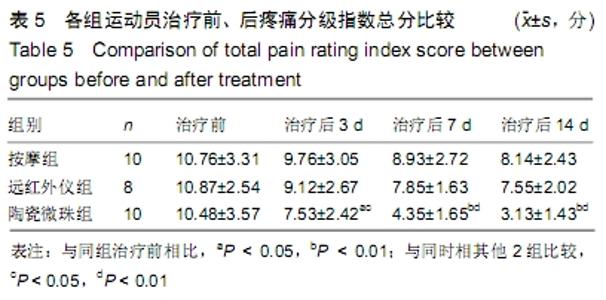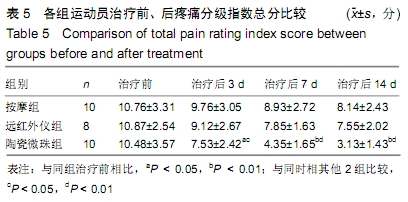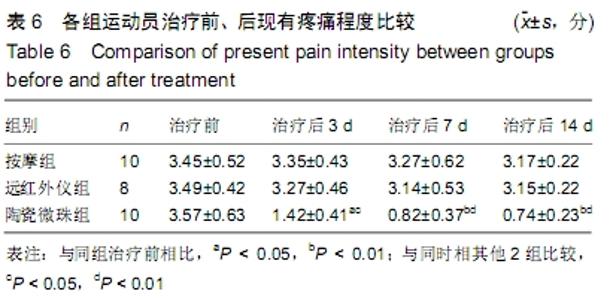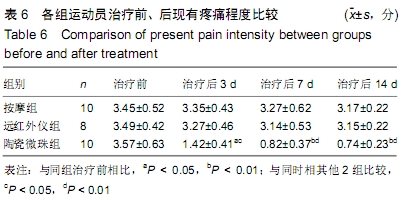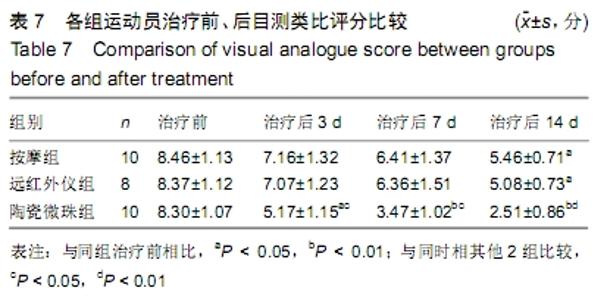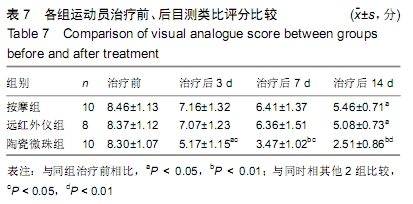[1] 何建伟,杨金龙,王安利,等.远红外陶瓷微珠干预对主动、被动肌力及PAR、AAR和TDPM指标效果的量化评价[J].体育科学,2014,34(12):54-62.
[2] 何建伟.远红外陶瓷微珠对骨骼肌损伤的治疗作用及机制研究[D].北京:北京体育大学,2012.
[3] 苗欣.艺术体操运动员脊柱侧弯特征及椎旁肌功能变化的研究[D].北京:北京体育大学,2013.
[4] ALLEN DJ, WESTERBLAD H. Role of phosphate and calcium stores in muscle fatigue. J Physiol. 2001;536(3):657-665.
[5] QUANSHENG S, YE T, JIANGGUO Z, et al. Effects of allicin supplementation on plasma markers of exercise-induced muscle damage, IL-6 and antioxidant capacity. Eur J Appl Physiol. 2008;103(3):275-283.
[6] NYBOA L, NIELS HS. Cerebral perturbations provoked by prolonged exercise. Prog Neurobiol. 2004;72:223-261.
[7] 李红涛,刘建学.高效远红外辐射陶瓷的研究现状及应用[J].现代技术陶瓷, 2005,26(2):20-26.
[8] 傅旭东.远红外电热磁中药导入法在治疗运动性疲劳与损伤中的运用[J].福建中医药,2007,38(5):48-49.
[9] 何建伟,杨金龙,赵广高.远红外陶瓷微珠对一次性力竭大鼠IL-6,T-AOC等指标的影响[J].莆田学院学报,2016,23(2):15-19.
[10] SHULTZ SJ, SCHMITZ RJ. Effects of transverse and frontal plane knee laxity on hip and knee neuromechanics during droplandings. Am J Sports Med. 2009; 37: 1821-1830.
[11] 龙志. 肌内效贴对延迟性肌肉酸痛的疼痛缓解效果研究及其机制探讨[D].上海:上海体育学院,2016.
[12] 赵明华. 火针疗法治疗颈型颈椎病的临床研究[D].广州:广州中医药大学, 2013.
[13] YAMANISHI R, UCHINO M, KAWASHIMA M, et al. Analysis of the association between the severity of ocular and systemic pain. Ocul Surf. 2019;66:1006-1012.
[14] CREMASCHI RC, HIROTSU C, TUFIK S, et al. Chronic pain in narcolepsy type 1 and type 2-an underestimated reality. J Sleep Res. 2019;18:785-792.
[15] LEEUWENBURGH C, HOLLANDER J, LEICHTWEIS S. Adaptations of glutathione antioxidant system to endurance training are tissue and muscle fiber specific.Am J Physiol. 2007;272:363-369.
[16] COLLIER MB, MCAULEY JP, SZUSZCZEWICZ ES, et al. Proprioceptive deficits are comparable before unicondylar and total knee arthroplasties,but creater in the more symptomatic knee of the patient. J Orthop Res. 2004;423(7):138-143.
[17] FERNSTRÖM M, TONKONOGI M, SAHLIN K. Effects of acute and chronic endurance exercise on mitoch-on-drial uncoupling in human skeletal muscle. J Physiol. 2003;554(3):755-763.
[18] 石葛明,王学礼,李桂桐,等.按摩对肌肉损伤修复作用的形态学研究[J].中国运动医学杂志,1991,10(4):201-204.
[19] HEWETT TE, TORG JS, BODEN BP. Video analysis of trunk and knee motion during non-contact anterior cruciate ligament injury in female athletes: lateral trunk and knee abduction motion are combined components of the injury mechanism. Br J Sports Med. 2009; 43: 417-422.
[20] 季冠芳,杨子彬.远红外线的生物学效应及其应用[J].天津医药, 2007,35(1): 78-80.
[21] 周谋望,杨延砚,葛杰,等. 健康成年人等张肌力测试的重测信度研究[J].中国康复医学杂志,2005,20(10):724-726.
[22] BASTIN J, CALVIN S, MONTAGNE G. Muscular proprioception contributes to the control of interceptive actions. J Exp Psychol Hum Percept Perform. 2006;32(4):964-972.
[23] TSAUO JY, CHENG PF, YANG RS. The effects of sensorimotor training on knee proprioception and function for patients with knee osteoarthritis: apreliminary report. Clin Rehabil 2008;22(5):448-457.
[24] SHULTZ SJ, SCHMITZ RJ. Schmitz Effects of transverse and frontal plane knee laxity on hip and knee neuromechanics during drop landings. Am J Sports Med. 2009; 37(9): 1821-1830.
[25] 陈婧婧.远红外线对造血干/祖细胞生物学特性的影响[D].上海:上海师范大学,2009.
[26] 潘展恒.新易筋疗法治疗胸椎小关节紊乱的临床研究[D].广州:南方医科大学,2011.
[27] 李良薇.针刺臂丛神经根结合循经取穴治疗神经根型颈椎病的临床研究[D].成都:成都中医药大学,2016.
[28] WORRELL TW. Factors associated with hamstring injuries. An approach to treatment and prevention measures. Sports Med. 2010;17:338-345.
[29] OLSEN OE, MYKLEBUST G, ENGEBRETSEN L, et al. Injury mechanisms for anterior cruciate ligament injuries in team handball: a systematic video analysis. Am J Sports Med. 2004;32(4):1002-1012.
[30] 谷茂恒,刘文峰,陶小平.振动训练缓解肌肉运动性疲劳的sEMG研究[J].湖南师范大学自然科学学报,2015,35(4):34-38.
[31] 曹庆雷,何建伟,杨金龙.远红外陶瓷微珠对大鼠一次性力竭运动骨骼肌CK、CK-MM、LDH指标的影响[J].体育学刊,2013,20(3):125-129.
[32] ALENTORN-GELI E, MYER GD, SILVERS HJ, et al. Prevention of non-contact anterior cruciate ligament injuries in soccer players. Part 1: Mechanisms of injury and underlying risk factors. Knee Surg Sports Traumatol Arthosc. 2009;(17):705-729.
[33] CARLSM BM. The regeneration of skeletal muscle-a review. Am J Anat. 2003;137:119-150.
|
